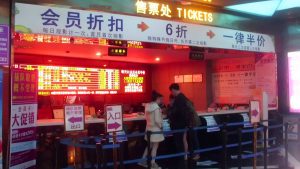Hong Kong: Financial markets are struggling to justify the valuations that stocks command and the recent rally in anticipation of a recovery is increasingly being questioned.
Investors have turned pessimistic after US Federal Reserve chairman Jerome Powell offered a gloomy picture of the world’s biggest economy.
Powell warned in his webcast about lasting economic damage from deeper and longer recessions and said “additional fiscal support could be costly, but worth it if it helps avoid long-term economic damage and leaves us with a stronger recovery.” He did not address the issue of negative rates in his speech, but said during the Q&A session he remained firm that negative rates are not in the cards.
“While the extraordinary Covid-19 economic hit has caused the US unemployment rate to swing from its lowest level in half a century to a peak unseen since World War II, financial markets are dancing to their own tune,” Seema Shah, Chief Strategist at Principal Global Investors, said.
“April marked the biggest monthly rise in the S&P 500 index since 1987. Yet, this also implies that, even though the tremendous market performance looks good, it just doesn’t feel good.”
Japan’s Nikkei 225 fell 1.74%, Australia’s S&P ASX 200 ended down 1.72%, Hong Kong’s Hang Seng benchmark eased 1.45% and China’s CSI 300 share index dropped 1.08%.
Principal’s Shah said markets may be right to look through Q2 numbers and look forward to a Q3 recovery, but it is entirely possible that there will be a Q4 reckoning, where a second wave of job losses and a prolonged period of business failures tests equity sentiment.
Credit markets cautious
And that is why some experts disagree with the US central bank’s push back against negative interest rates. Kenneth Rogoff, former IMF Chief Economist and a Harvard University professor, said: “If done correctly – and recent empirical evidence increasingly supports this – negative rates would operate similarly to normal monetary policy, boosting aggregate demand and raising employment.”
Credit markets also turned cautious with low-beta sovereign CDS widening by 2 basis points and high beta names by 3-4 bps. But Chinese property sector and Indian NBFC bonds were firm. Zhenro Properties is out with a $200-million bond issue which will price today. Price guidance revised to 8.35% from initial 8.9%, indicating the demand for yield.
“Chinese property USD credit has priced in excessive risk compared with other Chinese USD credit or global HY bonds. As the pandemic gets under control, China property sales continued to recover since March,” ICBC analysts said in a note. “With the persistently low global interest rate and abundant liquidity, Chinese USD property credit offers attractive risk reward.”
Indian NBFC names were also in demand after the government announced a stimulus package which would inject about $10 billion into the sector.
Shriram Transport Finance bonds were up 3-4 points, Muthoot Finance bonds rose 1-1.5 points and India Infoline bonds added 5 points. Indian airport and renewable energy bonds also jumped.
ATF China Bond 50 Index:
Also on Asia Times Financial
Stage set for ‘two Sessions’ amid virus spectre
Xi puts his stamp on changes to the Securities Law
Virus emergency spending costly but worth it: Fed’s Powell
Baosteel conducts first yuan deal with Rio Tinto
Norway wealth fund blacklists global resources, energy giants
Foreign Exchange: Second wave fears ground Asian currencies
Asia Stocks
· Japan’s Nikkei 225 fell 1.74%
· Australia’s S&P ASX 200 ended down 1.72%
· Hong Kong’s Hang Seng index eased 1.45%
· China’s CSI300 dropped 1.08%
· The MSCI Asia Pacific ex-Japan index fell 1.21%.
Stock of the day
Semiconductor Manufacturing International Corp rose as much as 10.2% after it reported a 91% jump in gross profit along with margin expansion on higher sales.
























